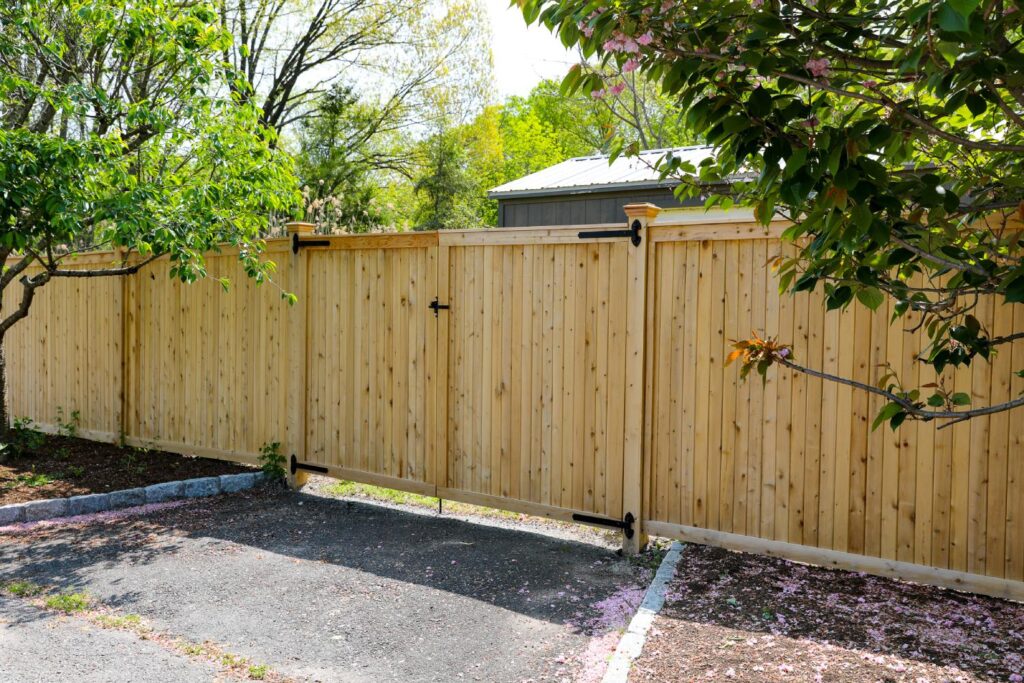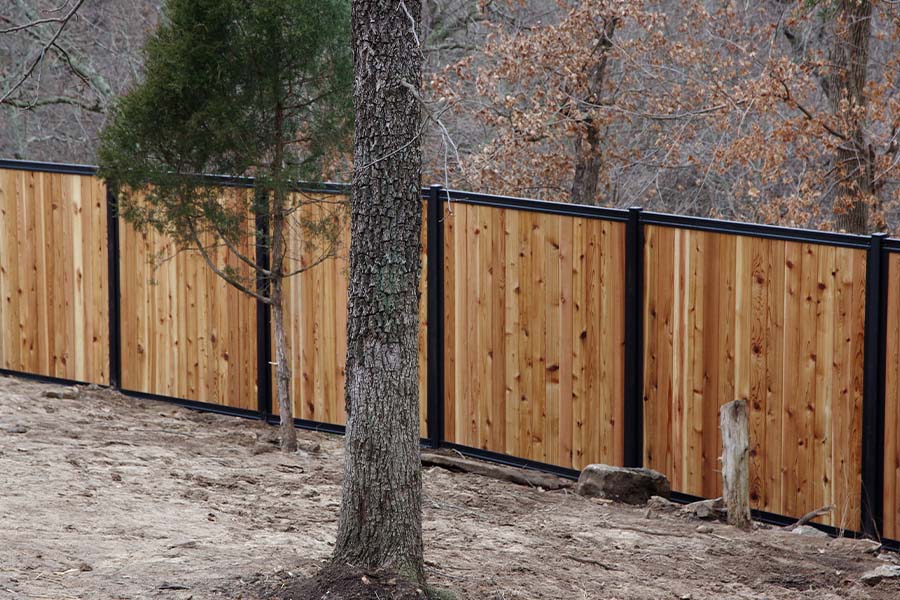All Categories
Featured
When it concerns preserving a wooden fence, homeowners commonly face the choice of whether to stain or repaint. Both choices have their cons and pros, and the choice eventually depends upon your visual preferences, the kind of wood, and just how much upkeep you want to commit to. Below's a thorough contrast to help you make a notified decision.
The Fundamentals of Painting and Staining
Painting involves covering the timber with a nontransparent layer of shade. It offers total coverage, concealing the wood grain while providing superb defense versus environmental elements.
Staining passes through the wood, enhancing its all-natural beauty while adding a safety layer. Depending on the type, stains can range from transparent to strong, permitting differing levels of timber grain exposure.
Advantages And Disadvantages of Painting
Pros:
Vast Array of Colors: Repaint deals countless shade alternatives, permitting you to match your fencing to your home's outside or individual design.
Longer Long-term: Top notch exterior paint can last as much as 5-7 years, calling for less regular reapplication.
Superior Protection: Paint forms a thick, solid barrier against dampness, UV rays, and parasites.
Cons:
Cracking and peeling off: With time, paint can split or peel off, specifically in areas with severe climate condition.
Hides Natural Wood Elegance: If you enjoy the all-natural grain of wood, paint may not be the most effective option.
Higher Upkeep: Repainting calls for removing the old paint, which can be labor-intensive.
![]()
Benefits And Drawbacks of Staining
Pros:
All-natural Look: Stains preserve and improve the natural charm of the wood, making it excellent for high-quality lumber like cedar or redwood.
Less Complicated to Reapply: Unlike paint, discolorations do not split or peel off. Reapplying tarnish typically calls for less surface area prep work.
Adaptable Finish Alternatives: Stains can be found in clear, semi-transparent, and solid selections, using various levels of protection.
Disadvantages:
![]()
Much Shorter Life-span: Discolorations, semi-transparent and specifically clear ones, may require reapplication every 2-3 years.
Limited Shade Alternatives: While spots supply natural tones, they lack the broad color scheme offered with paint.
Much Less Safety: Stains permeate the timber but do not give as thick an obstacle as paint, making them slightly much less safety against extreme climate.
Factors to Consider
Visual Preferences: If you desire vibrant shades and complete coverage, paint is the method to go. For a rustic and natural look, choose stain.
Wood Type: Premium woods with gorgeous grains gain from discoloration, while lower-grade timbers can be repainted for a polished appearance.
![]()
Environment: In moist or damp climates, paint's thicker barrier may supply better security. In modest or completely dry climates, discolorations can be enough.
Maintenance Dedication: Painting entails much less constant reapplication however more initiative during touch-ups. Staining needs regular upkeep yet is much easier to take care of.
Final Thoughts
Both painting and staining can efficiently shield and beautify your wooden fence. The most effective alternative depends on your priorities, whether they lean toward aesthetics, toughness, or convenience of upkeep. By comprehending the benefits and downsides of each, you can choose the surface that lines up with your requirements and ensures your fence continues to be a standout attribute of your home for years to find.
The Fundamentals of Painting and Staining
Painting involves covering the timber with a nontransparent layer of shade. It offers total coverage, concealing the wood grain while providing superb defense versus environmental elements.
Staining passes through the wood, enhancing its all-natural beauty while adding a safety layer. Depending on the type, stains can range from transparent to strong, permitting differing levels of timber grain exposure.
Advantages And Disadvantages of Painting
Pros:
Vast Array of Colors: Repaint deals countless shade alternatives, permitting you to match your fencing to your home's outside or individual design.
Longer Long-term: Top notch exterior paint can last as much as 5-7 years, calling for less regular reapplication.
Superior Protection: Paint forms a thick, solid barrier against dampness, UV rays, and parasites.
Cons:
Cracking and peeling off: With time, paint can split or peel off, specifically in areas with severe climate condition.
Hides Natural Wood Elegance: If you enjoy the all-natural grain of wood, paint may not be the most effective option.
Higher Upkeep: Repainting calls for removing the old paint, which can be labor-intensive.

Benefits And Drawbacks of Staining
Pros:
All-natural Look: Stains preserve and improve the natural charm of the wood, making it excellent for high-quality lumber like cedar or redwood.
Less Complicated to Reapply: Unlike paint, discolorations do not split or peel off. Reapplying tarnish typically calls for less surface area prep work.
Adaptable Finish Alternatives: Stains can be found in clear, semi-transparent, and solid selections, using various levels of protection.
Disadvantages:

Much Shorter Life-span: Discolorations, semi-transparent and specifically clear ones, may require reapplication every 2-3 years.
Limited Shade Alternatives: While spots supply natural tones, they lack the broad color scheme offered with paint.
Much Less Safety: Stains permeate the timber but do not give as thick an obstacle as paint, making them slightly much less safety against extreme climate.
Factors to Consider
Visual Preferences: If you desire vibrant shades and complete coverage, paint is the method to go. For a rustic and natural look, choose stain.
Wood Type: Premium woods with gorgeous grains gain from discoloration, while lower-grade timbers can be repainted for a polished appearance.

Environment: In moist or damp climates, paint's thicker barrier may supply better security. In modest or completely dry climates, discolorations can be enough.
Maintenance Dedication: Painting entails much less constant reapplication however more initiative during touch-ups. Staining needs regular upkeep yet is much easier to take care of.
Final Thoughts
Both painting and staining can efficiently shield and beautify your wooden fence. The most effective alternative depends on your priorities, whether they lean toward aesthetics, toughness, or convenience of upkeep. By comprehending the benefits and downsides of each, you can choose the surface that lines up with your requirements and ensures your fence continues to be a standout attribute of your home for years to find.
Latest Posts
Explore Save Big on Car Maintenance with Montclare Auto Repair’s Exclusive Deals
Published en
1 min read
Check Out the Premier Auto Repair Discounts in Montclare, Chicago
Published en
1 min read
Find Affordable Auto Repairs with Montclare’s Exclusive Service Specials
Published en
1 min read
More
Latest Posts
Explore Save Big on Car Maintenance with Montclare Auto Repair’s Exclusive Deals
Published May 30, 25
1 min read
Check Out the Premier Auto Repair Discounts in Montclare, Chicago
Published May 24, 25
1 min read
Find Affordable Auto Repairs with Montclare’s Exclusive Service Specials
Published May 21, 25
1 min read